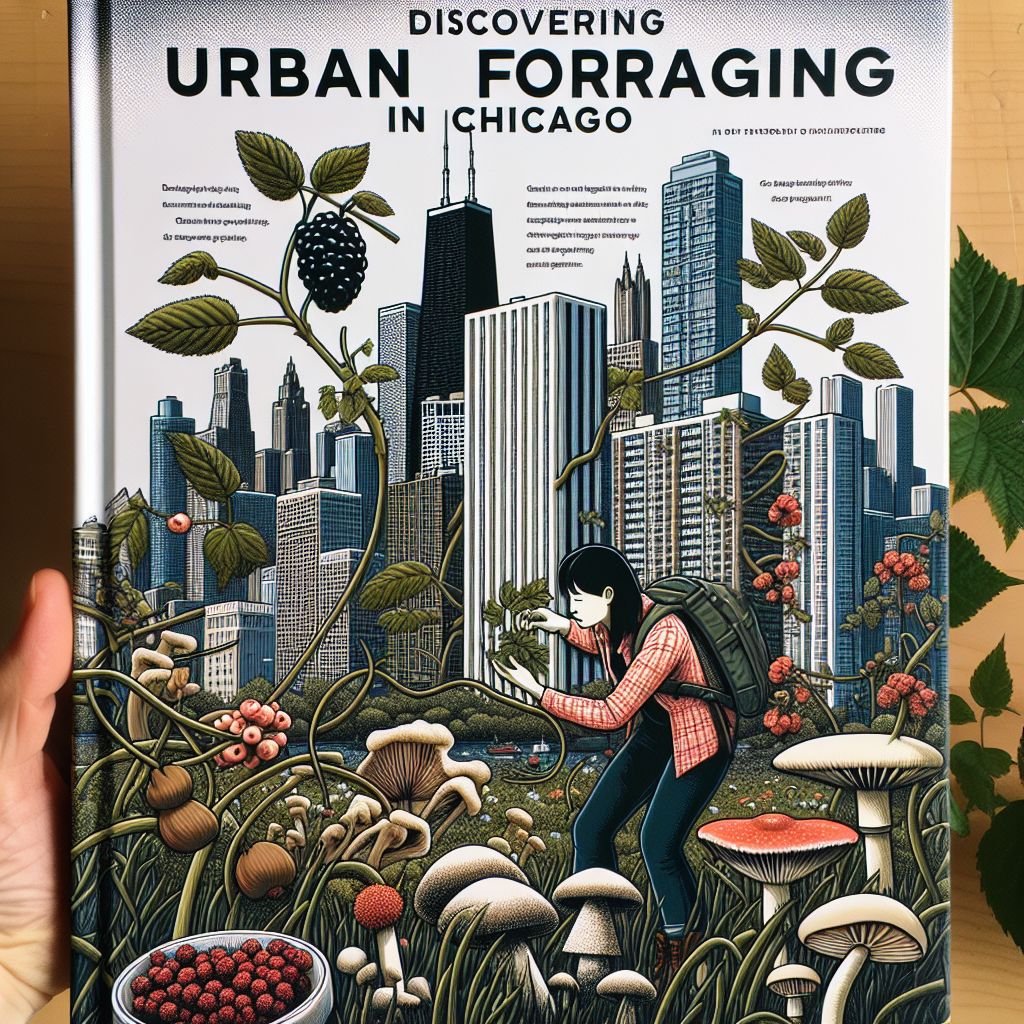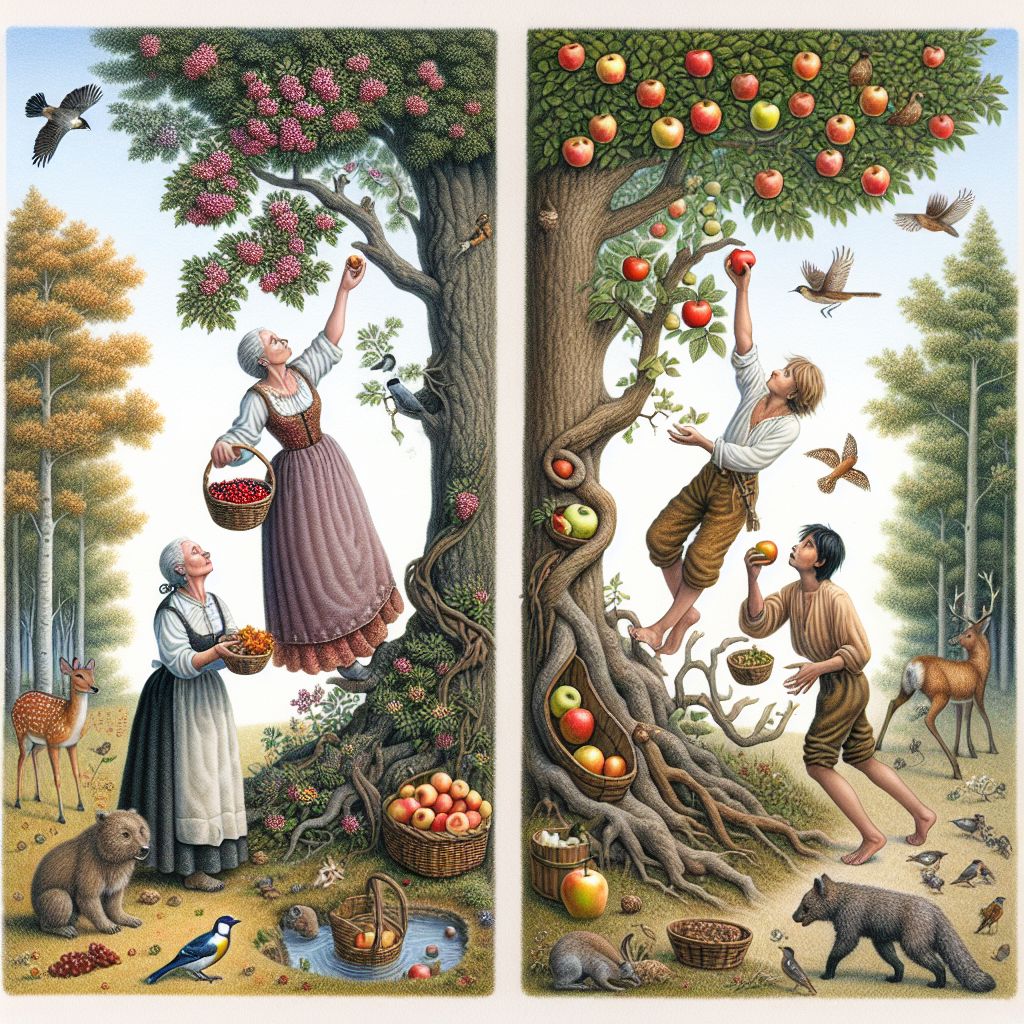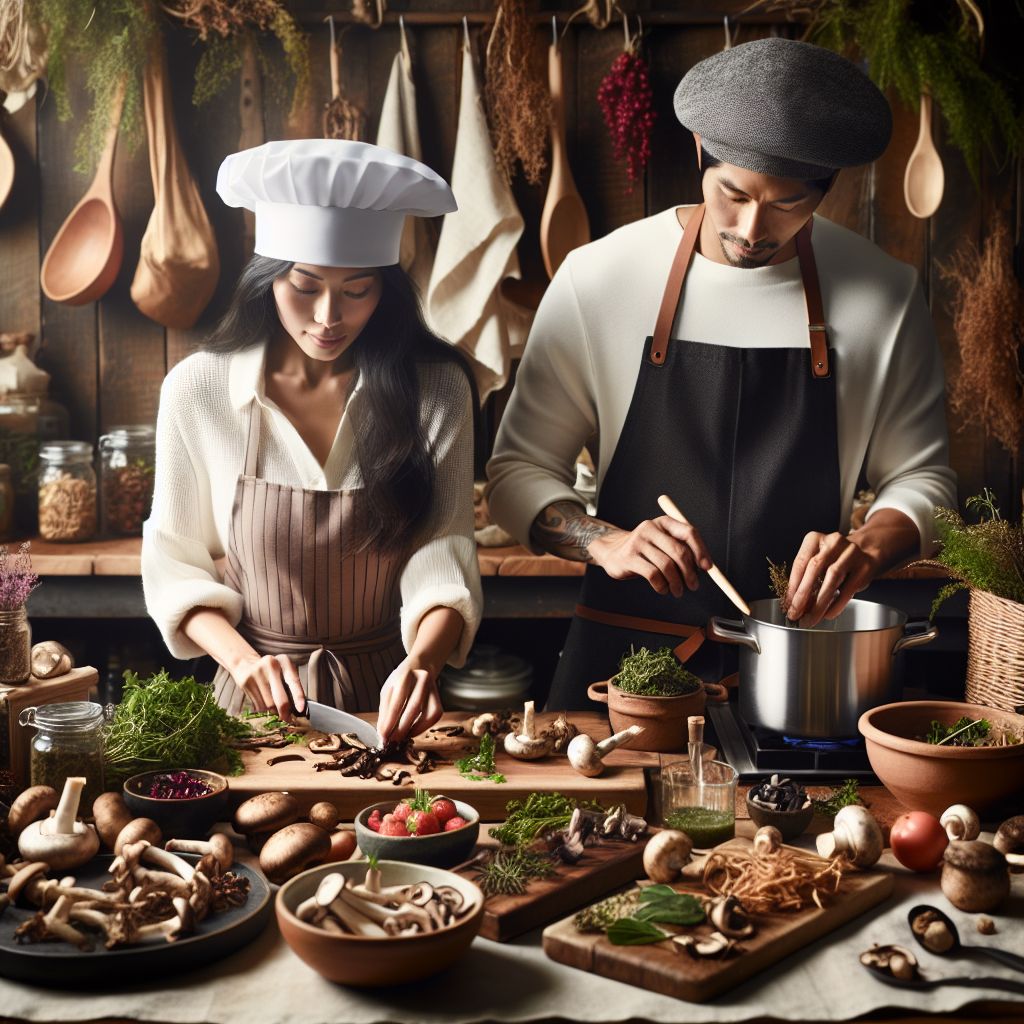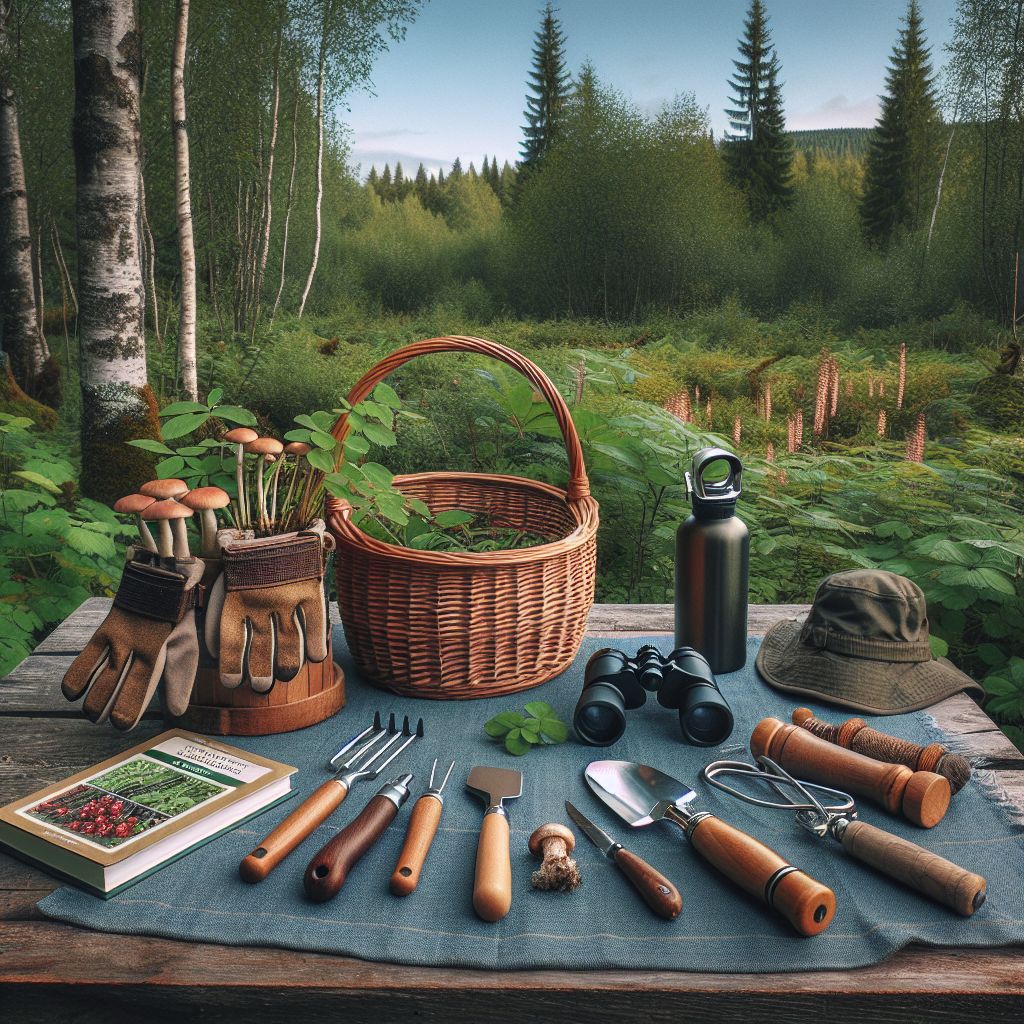Summary
-
Edible plants such as dandelions, wild garlic, nettles, and more are abundant in Chicago’s urban environment.
-
Foraging is a sustainable method of sourcing fresh, organic food in the city and connecting with nature.
-
There are particular locations in Chicago where foraging is plentiful, including parks, riverbanks, and residential areas.
-
Responsible foraging involves being mindful of overharvesting, legality, and safety precautions.
-
You can turn your foraged items into delicious meals using simple recipes and preservation techniques.

Discovering Urban Foraging in Chicago: A Guide to Edible Plants
Imagine strolling through the busy streets of Chicago, with skyscrapers looming overhead, and suddenly, you notice a patch of green. What if I told you that hidden amongst the cityscape, there’s a wealth of edible plants, just waiting to be found? That’s right, foraging in Chicago is not only feasible; it’s a delightful journey that can offer tasty and healthy rewards.
Urban foraging in Chicago is like a treasure hunt where you can find nature’s treasures in the most unexpected places. This practice allows us to reconnect with our hunter-gatherer ancestors and helps us to better appreciate the environment. Plus, it’s a great way to add fresh, local, and free ingredients to your dishes!
What Makes Chicago a Great Place for Foraging?
From parks and forests to lakefronts, Chicago is teeming with diverse ecosystems that host a variety of plants. Many of these plants are not only visually appealing but also edible. Foraging in Chicago is more than just a way to find food; it’s a way to form a bond with the city that most people miss. It’s a way to see the cityscape as a living, breathing place where nature flourishes side by side with people.
Foraging Calendar: What to Look for and When
While you can forage all year, the types of edible plants you’ll find vary by season. Here’s a cheat sheet to help you plan your foraging outings in Chicago:
Spring: Keep an eye out for tender greens such as dandelions and nettles, which are at their most flavorful and nutritious.
Summer: Berries and wildflowers are in abundance, providing a sweet and colorful bounty.
Fall: Nuts and late-season fruits are ready to be gathered, ideal for winter storage.
Winter: While it may seem barren, you can still find hearty greens and hardy herbs.
Keep in mind, the best time to forage is in the morning when plants are at their most lively and before the city fully comes to life.
But where in the world can you find these edible delights in a city like Chicago? Let’s explore the top places to start your urban foraging adventure.
Public Parks and Green Spaces: The Bounty of Nature
Public parks in Chicago are a fantastic place to start for urban foragers. Lincoln Park, with its vast green spaces and diverse plant life, can be a treasure trove. You may find dandelion greens that are perfect for a refreshing salad or chickweed for a healthy pesto. Always remember to follow park regulations and respect the spaces that act as a communal backyard.
Wild Edibles by the water: A Forager’s Paradise
The banks of the Chicago River and the shores of Lake Michigan are teeming with wild edibles. The damp, nutrient-rich soil is perfect for plants such as wild garlic and watercress. As you explore these areas, look for foraging groups or classes that can provide a wealth of information and camaraderie.
Neighborhood Streets: food is Closer Than You Think!
Even in the concrete jungle of Chicago, Mother Nature prevails. Take a stroll around your neighborhood and you might be surprised at what you can find. For instance, mulberry trees are often overlooked, but they bear sweet and abundant fruit. Just remember to forage away from busy roads to avoid plants that have been tainted by pollution.

Foraging: A Balance of Give and Take
Foraging isn’t just a one-sided affair; it’s a delicate balance of taking and giving. We need to harvest in such a way that allows plants to flourish and be there for future foragers.
For instance, if you’re foraging for wild garlic, only take a few leaves from each plant instead of pulling it up by the roots. This allows the plant to keep growing, and you can come back to the same spot next year for more.
Next, we need to discuss a few key points about foraging: sustainability, legality, and safety.
How to Avoid Overharvesting
Overharvesting is a serious issue for city foragers. Here are some basic rules to prevent it:
-
Only collect what you will use.
-
Try not to take too much from one plant or area.
-
Be mindful of endangered species and don’t harvest them.
Adhering to these guidelines not only helps protect the environment, but also ensures the plants you love will be around for future generations.
Law and Order: Forage Responsibly
Before you begin your foraging adventure, it’s important to be aware of the local laws. In Chicago, foraging in public parks is usually permitted, but there are some restrictions. For example, it’s against the law to forage in nature reserves or protected areas. Always double-check the regulations of the specific location where you intend to forage.
Also, remember to respect private property. If you come across a plant in someone’s yard that is full of potential, it’s courteous (and legal) to ask for permission before you begin to harvest.
Foraging Safety: Identification Skills and Best Practices
Safety is the most important thing to keep in mind when foraging. Eating a poisonous plant by mistake can have severe repercussions. That’s why it’s crucial to:
-
Make sure you can accurately identify plants. Guidebooks or apps can be helpful, and if you’re not sure, don’t risk it!
-
Consider going to workshops or foraging with people who have experience.
-
Pay attention to where you are and avoid places that might have been sprayed with pesticides or other chemicals.
With this knowledge and these skills, you’re ready to start foraging in a safe and sustainable way.

Transforming Foraged food into Tasty Dishes
After you’ve foraged your city’s hidden treasures, it’s time to whip up some tasty dishes. The charm of foraged food lies in its freshness and the tale behind each ingredient. Let’s kick off with some simple recipes.
Easy Recipes to Begin With
Picture turning those dandelions you discovered into a bright green salad. Or maybe turning that wild garlic into a hearty pesto to mix with pasta. The options are limitless, but here are a few recipes to help you get started:
Dandelion Salad: Mix together some young dandelion leaves, sliced strawberries, goat cheese, and a basic balsamic vinaigrette for a light and refreshing spring salad.
Pesto with Wild Garlic: Combine wild garlic leaves, olive oil, pine nuts, parmesan cheese, and a dash of lemon in a blender to create a zesty pesto that pairs well with any pasta dish.
Preserving Your Foraged Foods: Canning and Drying Tips
Preserving your foraged foods allows you to enjoy them long after the foraging season has passed. Here’s how:
-
Jamming: You can transform berries into jams or jellies and keep them in sterilized jars.
-
Drying: Hang or lay out herbs and greens to dry, then keep them in airtight containers.
These techniques will ensure you have a pantry full of seasonal flavors.
Healthful Herbal Teas and Infusions
Did you know that you can drink your foraged finds as well as eat them? Herbal teas made from plants such as mint or chamomile can be both soothing and beneficial for your health. All you need to do is steep the leaves in hot water and you’ve got yourself a cup of wellness straight from your garden.
Enriching Your Foraging Experience
Foraging is not just a pastime; it’s an ability that gives you control over your food supply. However, to do it correctly, you’ll need a few resources and a group to learn from.
When you’re preparing to go foraging, make sure to pack a strong bag or basket, some gloves, and a reliable plant identification guide. These items will help your foraging experience go more smoothly and be more fruitful.
Creating a network of like-minded foragers can be a fulfilling experience. Exchange stories, share recipes, and even plan group foraging trips. The more you engage with others, the more knowledge you’ll gain.
But most importantly, never stop learning. There are a wealth of resources available, from books to online courses, that can further your knowledge of foraging and nature.
Now that you’re equipped with this knowledge and these tools, you’re prepared to venture into the urban wilderness and begin foraging. Keep in mind, every edible plant you find is a step in the direction of a more sustainable and interconnected lifestyle. Enjoy your foraging!

What to Bring on a Foraging Adventure
Foraging is a lot like going on a treasure hunt. You need the right tools to find the treasure. Here’s what you need to bring on your urban foraging adventure:
-
A plant identification guide.
-
A durable bag or basket for gathering your finds.
-
Gloves for hand protection, particularly when harvesting nettles or other spiky plants.
-
Scissors or pruning shears for cutting plants.
-
A notebook or phone for note-taking or picture-taking.
With these tools, you’ll be ready to forage responsibly and efficiently, ensuring you can savor the fruits of your effort (in a literal sense) without any problems.
Creating a Foraging Community: Exchanging Information and Discoveries
Foraging becomes more enjoyable and fruitful when done with others. There are plenty of people in Chicago who are also interested in urban foraging. You can start by becoming a member of local foraging groups on social media or participating in community events. Exchanging information and discoveries with a community can enhance your experience and enable you to learn more about the local plants. You may even form some friendships in the process!
Want to Learn More? Check Out These Books and Resources for Chicago Foragers
If you’re interested in learning more about urban foraging, Chicago has plenty of resources. Here are a few to help you get started:
-
The Joy of Foraging by Gary Lincoff – This book is a great resource for learning about edible plants, and it even includes a section specifically on urban foraging.
-
Midwest Foraging by Lisa M. Rose – This book is perfect for Chicago foragers because it’s specifically tailored to the Midwest.
-
Local foraging workshops and tours – Keep an eye out for these events at Chicago’s nature centers and botanical gardens.
These resources will help you grow your foraging knowledge and give you the confidence to explore the city’s edible landscape.
Commonly Asked Questions
As a beginner forager, you’re sure to have a few questions. Here are some of the most frequently asked ones, answered to help you start off on the right path.
Can You Forage in Chicago?
Urban foraging is indeed legal in Chicago, but there are some guidelines to keep in mind. Many public parks in the city allow foraging, but it’s always a good idea to check the specific rules for each park. Stay away from protected nature reserves or private properties unless you have been given permission to forage there.
How Can I Tell if a Plant is Edible?
Proper plant identification is key to safe foraging. You can use a dependable field guide or app, go to workshops, and if you can, forage with people who know what they’re doing. If you’re not sure about a plant, don’t risk it. Always prioritize your safety.
When is the Optimal Time to Forage in the City?
Urban foraging is best done in the morning. The plants are at their peak freshness during this time and the city is not yet bustling, making foraging easier. Additionally, you have the chance to experience the calmness of the city before it becomes fully active.
What Should I Do to Make Sure I’m Foraging Sustainably?
Here are some tips to keep in mind to forage sustainably:
-
Only take what you will use and make sure you use what you take.
-
Harvest in a manner that allows the plant to continue to grow. This could be by only taking a few leaves from each plant.
-
Be aware of the environment and avoid areas that are over-foraged or ecologically sensitive.
Is it Possible to Forage in Chicago’s Public Parks?
Many of Chicago’s public parks are open to foragers, but it’s vital to forage responsibly. Some parks may have specific rules about what can be foraged and how much. Always check the park’s regulations before you start picking. In addition to that, be respectful of the park and its wildlife, and make sure to leave no trace of your visit behind.


